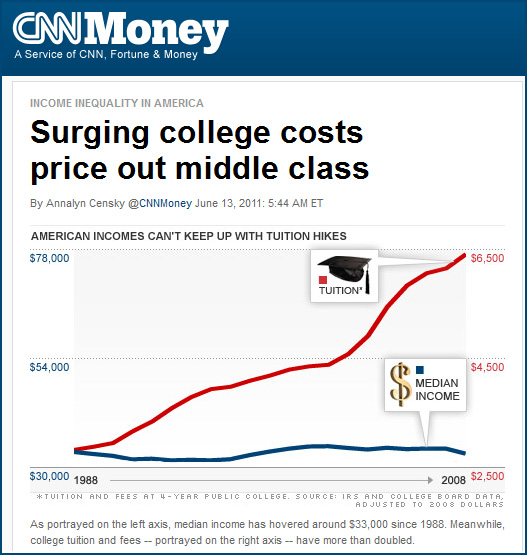Sayonara Sony: How industrial, MBA-style leadership killed a once great company — from forbes.com by Adam Hartung
Excerpt:
Who can forget what a great company Sony was, and the enormous impact it had on our lives? With its heritage, it is hard to believe that Sony hasn’t made a profit in 4 consecutive years, just recently announced it will double its expected loss for this year to $6.4 billion, has only 15% of its capital left as equity (debt/equity ration of 5.67x) and is only worth 1/4 of its value 10 years ago!
From DSC:
Blockbuster, Kodak, and now Sony — and I’m sure there are countless others who have moved in and out of prosperous times — but those three come instantly to my mind as more recent examples of The Innovator’s Dilemna — which strikes again!
It reminds me of a Steve Jobs’ quote (and I’ll use the item found at Yastrow.com)
One of Jobs’ business rules was to never be afraid of cannibalizing yourself. “If you don’t cannibalize yourself, someone else will,” he said. So even though an iPhone might cannibalize the sales of an iPod, or an iPad might cannibalize the sales of a laptop, that did not deter him.
Addendum (with emphasis from DSC):
Another thought comes from Guy Kawasaki’s talk at TEDxHarkerSchool entitled, “The 12 Lessons I Learned from Steve Jobs”
- You need to jump to the next curve — don’t duke it out w/ others on the current curve (DSC: Like from the book Jonathan Livingston Seagull...don’t fight it out on the beach with the other seagulls. Instead, learn how to fly. <– that’s been my prayer, LORD teach me how to fly.)
- Customers cannot tell you what they need — they can only describe things in terms of what they already have; bigger, faster, cheaper, status quo
- Challenging your mind is a sign of intelligence (DSC: Reinvent, staying relevant, be able to completely reverse a viewpoint, cannibalizing own business)
- “Experts” are clueless
- The biggest challenges beget the best work
- Design counts
- Use big graphics and big fonts
- Value does not equal price


























